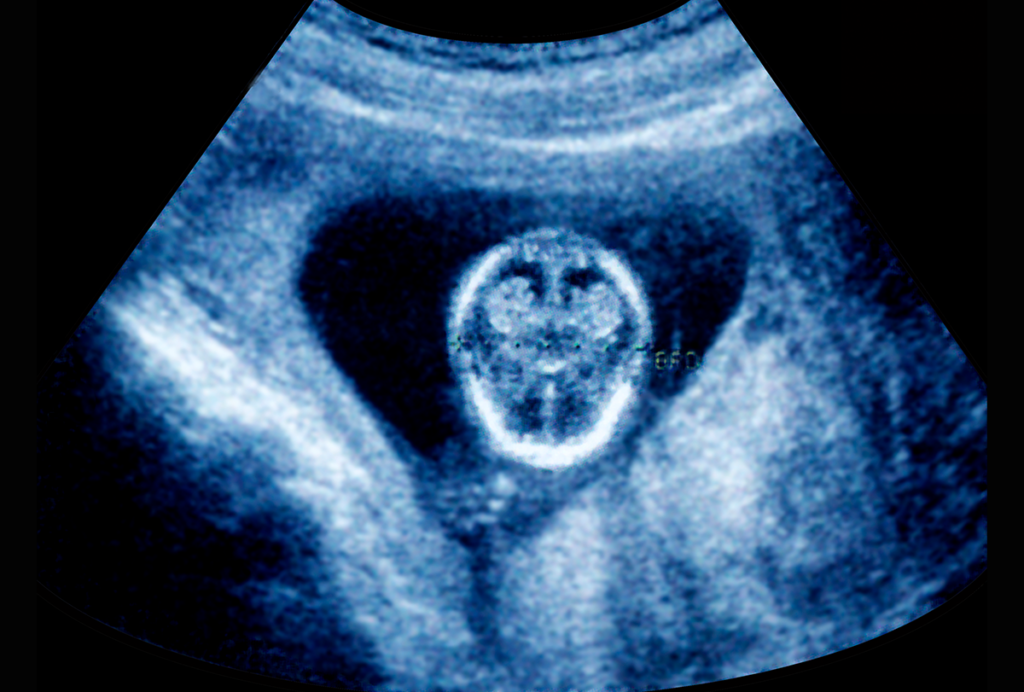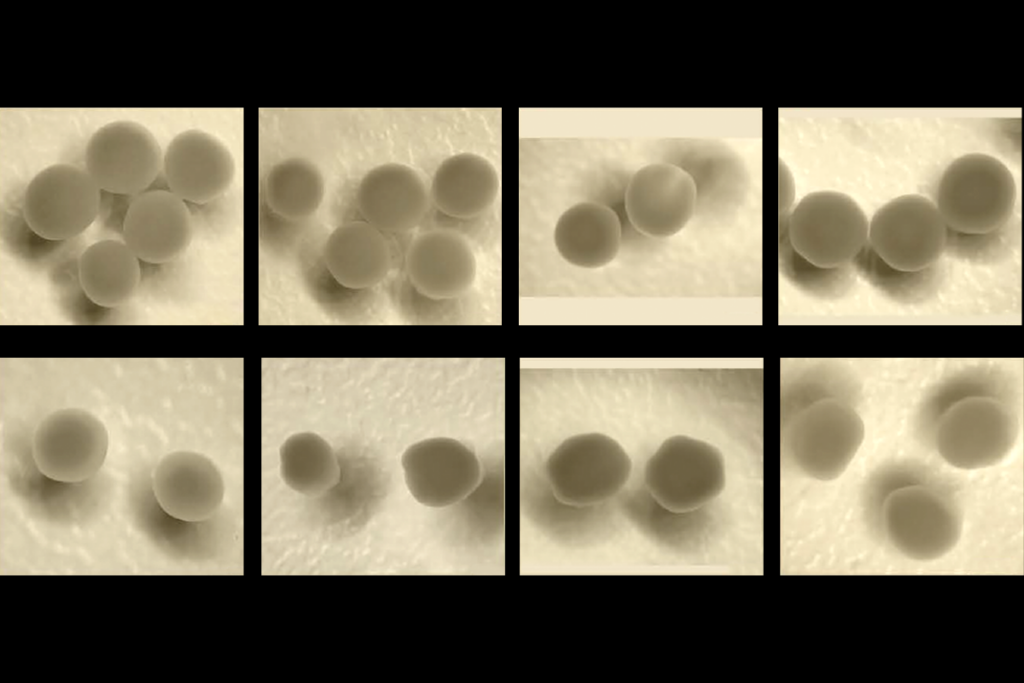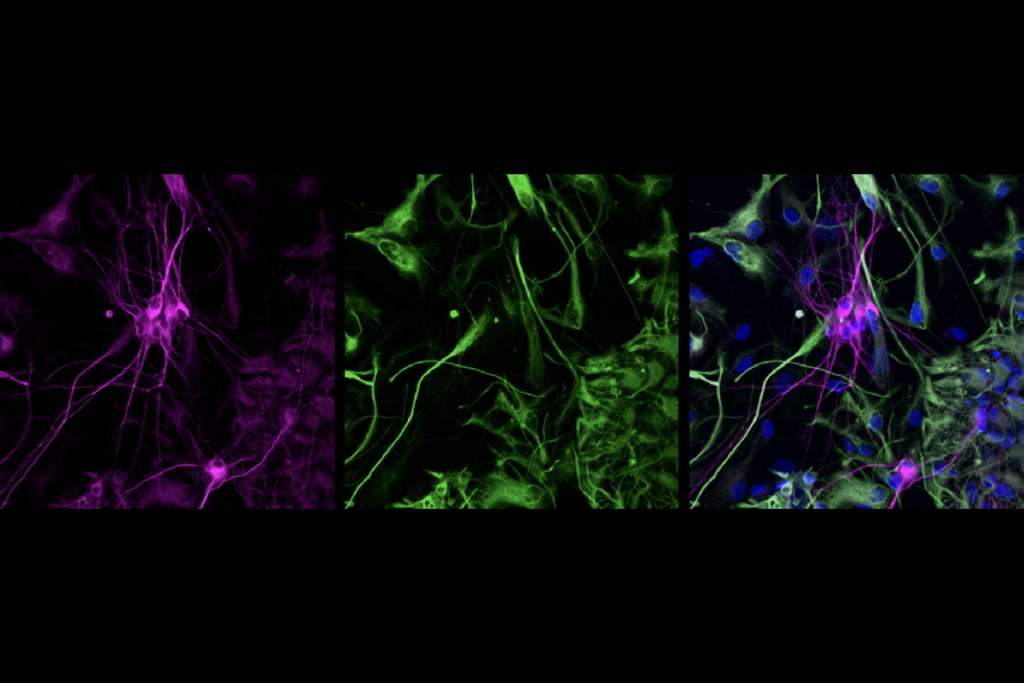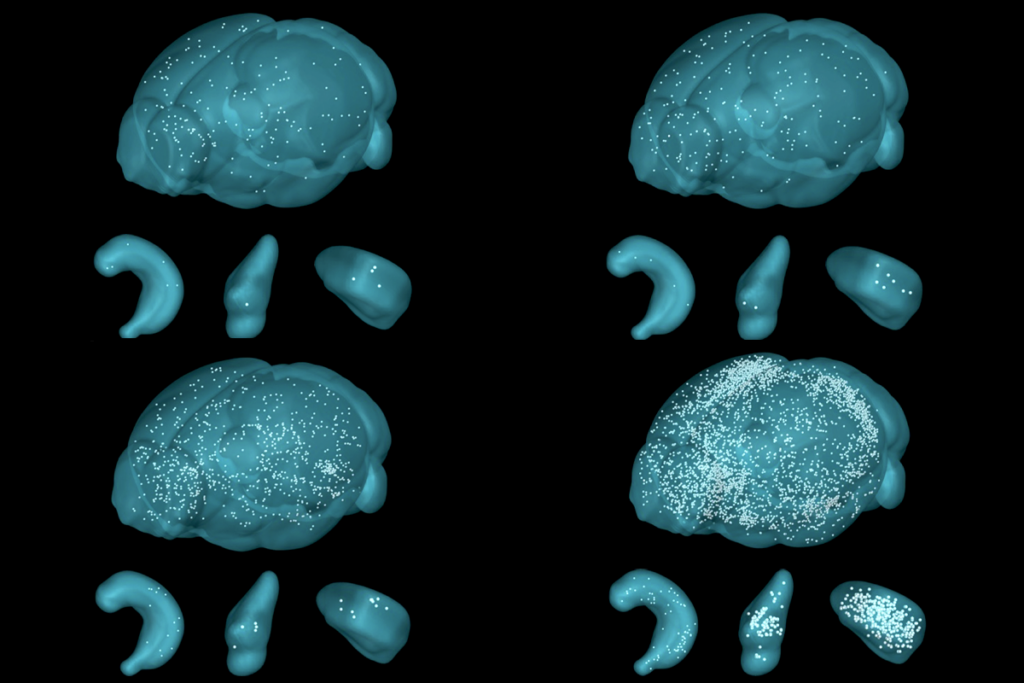Your Twitter circle shapes the content in your feed, and ours overflowed with research findings this week — plus a new policy brief from the International Society for Autism Research (INSAR).
One literally mind-bending bioRxiv preprint asked this: “How does the underlying physical geometry of the brain constrains emerging brain dynamics and function?” tweeted study investigator James Pang, a research fellow at Monash University in Melbourne, Australia.
This work revolves around the question:
How does the underlying physical geometry of the brain constrains emerging brain dynamics and function?We tried to answer this question by combining MRI data and an eigenmode-based approach, popularly used in Physics and Engineering (2/n)
— James Pang (@jchrispang) October 5, 2022
Pang’s analysis suggests that “human cortical and subcortical activity, measured with magnetic resonance imaging under spontaneous and diverse task-evoked conditions, can be parsimoniously understood as resulting from excitations of fundamental, resonant modes of the brain’s geometry (i.e., its shape), rather than of its complex inter-regional connectivity, as classically assumed.”
Twitter user Lynton asked whether the approach could “be used for evaluating EEG recordings and or source analysis?”
“It sure can and has. The approach is informed by neural field theory, which has been used extensively to model EEG,” replied Alex Fornito, professor of psychology at Monash University and Pang’s co-investigator.
Thanks! It sure can and has. The approach is informed by neural field theory, which has been used extensively to model EEG. See this ref and citations therein:https://t.co/IVRznCSEWo
— Alex Fornito (@AFornito) October 6, 2022
“Wowzers! What a beautiful set of ideas, methods and findings!” tweeted Armin Raznahan, chief of the Section on Developmental Neurogenomics at the U.S. National Institute of Mental Health, in a separate thread.
Wowzers! What a beautiful set of ideas, methods and findings! ???????????????????? Huge congrats @jchrispang @AFornito and team! Gorgeous … https://t.co/FHvBaTXsls pic.twitter.com/9C3z0Guzxr
— Armin Raznahan (@bogglerapture) October 5, 2022
“This is amazing! Anyone doing it for cerebellum?” asked Kimberly Aldinger, assistant professor of genetic medicine at the University of Washington in Seattle.
“We have also done it in multiple subcortical structures … So cerebellum is certainly doable,” Pang replied.
We have also done it in multiple subcortical structures (see Fig. 5 of the paper or my recent twitter thread). So cerebellum is certainly doable ????
— James Pang (@jchrispang) October 5, 2022
The next thread making the rounds in our feeds also began with a question: “Do genetic risk variants for psychiatric disorders implicate immune cells?” The answer is yes, according to Mary-Ellen Lynall, research fellow at the University of Cambridge in England, who also provided a link to her team’s new study, published 15 October in Nature Communications.
Do genetic risk variants for psychiatric disorders implicate immune cells? ????Yes!????”Genetic variants associated with psychiatric disorders are enriched at epigenetically active sites in lymphoid cells” out now in @NatureComms https://t.co/mwhuO2ciI8
— Mary-Ellen Lynall (@MLynall) October 16, 2022
The results suggest “a possible model where environmental stimuli activate T cells to unmask the effects of psychiatric risk variants, contributing to the pathogenesis of mental health disorders.”
“It is really interesting that you find such a strong T-cell signal,” tweeted Mike Bogetofte Barnkob, a researcher at the University of Southern Denmark. He then asked Lynall why she thought this was the case.
High on the list of causes, she replied, are “altered responses to infections.” She went on to explain that the data were mainly from adult blood samples and that the team needs “to look in more T cell epigenetic datasets across tissues, across development, in patient groups.”
Thank you! Altered responses to infections is definitely high on the list of candidate mechs, given the psych epidemiology. These data were mainly adult blood samples. We need to look in more T cell epigenetic datasets across tissues, across development, in patient groups…
— Mary-Ellen Lynall (@MLynall) October 16, 2022
“Is there an infection component here as well as the environmental drivers like stress?” asked Ceri Fielding, lecturer in virology at Cardiff University in Wales.
Is there an infection component here as well as the environmental drivers like stress?
— Dr. Ceri Fielding (@CeriFielding) October 16, 2022
“I suspect so,” Lynall responded, adding that “no one stimulation condition stood out so a variety of immune insults may interact with genetic risk to lead to symptoms.”
…but no one stimulation condition stood out so a variety of immune insults may interact with genetic risk to lead to symptoms. Epigenetic data from immune cells following stress or ex vivo stimulations with stress hormones would be a helpful addition here 2/2
— Mary-Ellen Lynall (@MLynall) October 16, 2022
“Intriguing results implicating the adaptive immune system in several major psychiatric disorders,” tweeted Katharina Schmack, a neuroscientist at the Francis Crick Institute in London, England.
Super interesting! ???? I’m always confused by the role of the immune system in schizophrenia (e.g. C4 is the strongest implicated GWAS locus but doesn’t seem to linked to the MHC ????). Do you think these epigentic markers are environmental or the effect of unknown genetics?
— Jonas Verhellen (@jonas_verhellen) October 16, 2022
Jonas Verhellen, a doctoral research fellow at the University of Oslo in Norway, wondered if the “epigenetic markers are environmental or the effect of unknown genetics?”
“If I read the study correctly, the link to the immune system seems to be explained by genetics,” Schmack replied. Lynall concurred and noted that “the greater enrichment of trans-risk in stimulated vs unstimulated T cells suggests potential gene-environment interactions.”
Exactly. And the greater enrichment of trans-risk in stimulated vs unstimulated T cells suggests potential gene-environment interactions. And of course, the results don’t speak to/rule out additional environmental contributions to pathogenesis via either lymphoid or myeloid cells
— Mary-Ellen Lynall (@MLynall) October 17, 2022
Rounding out the week’s discussion, INSAR tweeted a link to a new policy brief aimed at “preventing, reducing, and improving interactions between autistic individuals and the criminal justice system.”
INSAR has released a new policy brief: “Autism and the Criminal Justice System”. Read the brief here: https://t.co/C7A5YwqcJJ pic.twitter.com/dnXSup12Xq
— INSAR (@AutismINSAR) October 10, 2022
The brief offers a model of how people with autism interact with the criminal justice system as both offenders and victims, plus recommendations to improve those interactions in six areas.
“Great to see this published by INSAR,” tweeted Chloe Holloway-George, a postdoctoral research fellow at the University of Nottingham in England, who contributed to the brief. “Thanks to @Drexelautism for all their hard work and asking me to be involved in the process.”
Great to see this published by INSAR. Thanks to @Drexelautism for all their hard work and asking me to be involved in the process. Valuable experience and I hope this continues to drive discussions and changes going forward! https://t.co/g4sfpK62os
— Chloe Holloway-George (@Dr_Chloe_HG) October 11, 2022
“This brief is chock full of recommendations and resources…do not sleep on it!” tweeted Kaitlin Koffer Miller, co-director of the Policy Impact Project at the A.J. Drexel Autism Institute in Philadelphia, Pennsylvania.
Thrilled that our work on #autism and #criminaljustice from @Drexelautism is out and available! This brief is chock full of recommendations and resources…do not sleep on it!
— Kaitlin Koffer Miller (@KHKofferMiller) October 11, 2022
Planning to attend Neuroscience 2022? Skipping this year? Interested in being featured in Spectrum’s coverage? We want to hear from our community. Take this quick survey to let us know your plans!
That’s it for this week’s Community Newsletter! If you have any suggestions for interesting social posts you saw in the autism research sphere, feel free to send an email to [email protected].
Follow us on Facebook, Twitter (@Spectrum), Instagram and LinkedIn.
Subscribe to get the best of Spectrum straight to your inbox.





